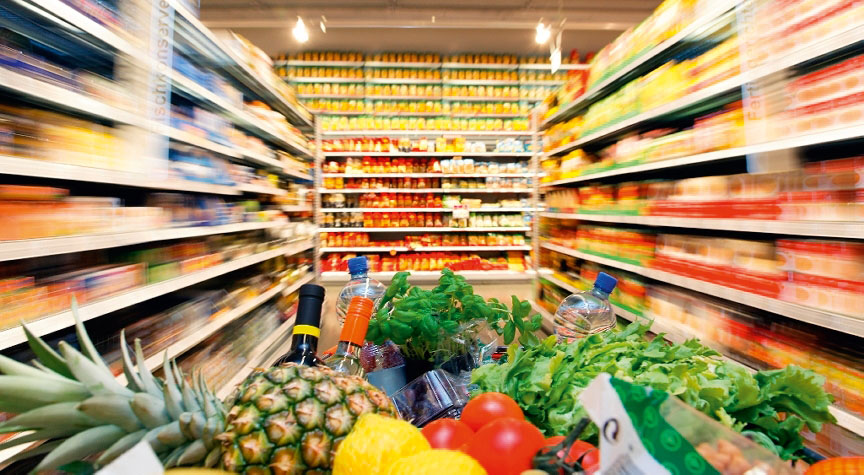
If you’ve been on the health and fitness track for a while now, you know that one of the areas where you have to do constant battle is your diet. Depending on your fitness goals, you should ideally have a consultation with your nutritionist or doctor, who can make a structured plan for you to follow (or at least keep you cognizant of what to prepare and what to avoid).
But a potential minefield is a location where seniors, adults, and children can be seen converging: the grocery store. As one of the modern conveniences of living in an urban area, the grocery is as ubiquitous as a cellphone: they’re everywhere, and with good reason. Rather than go to a wet market for daily consumption needs, most “urbanites” prefer both the convenience and the (perceived) cleanliness of a grocery store. (Whether the latter is true or not is something that can be debated.)
The potential traps you may encounter in this place may not be obvious, which is to be expected, since we are dealing with one of the baser instincts we have: hunger. Think of it this way: in the same way that there’s no explaining why we have certain favorite foods that others don’t like, we may have grocery shopping habits we are unaware of, which, when revealed, could be culprits that take us farther away from our health and fitness goals.
Here are a few ideas you can chew on as you make your way through the grocery aisles:
Make a list. I see many people who shop without one, and who have to call someone to ask what else needs to be bought. One other mindless trap is being on the phone while doing your shopping, and I see customers unthinkingly placing things in their basket or cart, while talking animatedly about someone’s dress. (Or maybe I’m just jealous of their multitasking skills.)
At any rate, there are two particular reasons why a list may be useful, especially with your health goals. One, sticking to a list gives order to your shopping activity. While this sounds like a dour thing to do in a grocery, having a list that you can strictly adhere to erases many of the “should I take this or that” questions—which saves you time, effort, and most of all, focuses on what you need versus what you want.
Once a list is absent, we are (as humans) prone to rationalizing almost anything, and you can easily justify purchasing two pints of mint chocolate chip ice cream by thinking, “Anyway, I just did an hour on the treadmill.” Granted, we can make similar justifications with a list present, but when something is written and right in front of you, it becomes a little harder to dismiss.
Second, having a list made also means you have taken stock of what’s in your pantry or refrigerator and are only including things you actually need. I have fallen prey to this twice, where I forgot to make a list (or made an unplanned shopping trip), and I ended up buying something I had at home. Aside from being wasteful, this can also encourage more consumption than is warranted at home, with us thinking that having much of the item is a license to consume more. (Let’s face it: when something is scarce, we adjust our behaviors accordingly. The opposite is also true.)
Labels can be misleading. With so many marketers jumping on the health bandwagon, any consumer can feel a little lost while doing their grocery shopping, what with labels that announce they have no transfat, less sodium, high fiber, are packed with anti-oxidants, work great with a Keto diet, and so much more. It can be overwhelming, and normally, these labels are attached to processed foods. Think about it: Mother Nature doesn’t stick labels on what she produces, and relies on their color, texture, smells to advertise them.
So the next time you are drawn to a “loud” sticker announcing that this is the latest anti-whatever-is-fashionable-to-exclude-from-your-diet product, think: Is this food natural or processed? (Chances are it’s the latter.) What have they added since they took away something from it? (Nothing comes for free, and that includes making foods tasty.) Does this product even do what it says it is doing? (Labeling a plant-based product as having no cholesterol is superfluous, since only animal products have cholesterol.) If it is all-natural, why does it have all these ingredients I can’t even pronounce? (Natural foods tend to have easier names to say.)
Look further than eye level. Manufacturers and companies pay top peso for their wares to be placed at eye level. Depending on their target market, that could mean the second to the top shelf for adults, and most likely the second to the last shelf if they wish to entice children. What this means is that you may be unnecessarily shelling out more money than you need to if you stick to only what you see—in this case, at your literal eye level.
By looking further (above, below, sideways), you may surprise yourself and find that there are equally viable alternatives that are just as amenable as those seen with little effort. They may cost less, or even have other qualities that surpass those of the products you usually get. A little bonus is that you get to stretch, bend, or lean your body, anything to add a little activity to your routine. Make it a habit to get out of your comfort zone, and your choices could expand dramatically.
Never shop on an empty stomach. The converse of this is that you should ideally shop for groceries after you’ve had a snack or meal. This is an idea that is probably on many guides, but is one I would emphasize because it is a trap so many people fall into, making me assume it’s a “blind spot” for many consumers—which many of the simpler traps really are.
When you couple an empty stomach with no prepared grocery list, don’t be surprised when your total—in both calorie count and pesos shelled out—becomes higher. There have been documentaries on food channels that prove what I’ve always known: human activities like shopping are studied, and researched, and the results of these studies are laid out in our malls, our favorite shops, and especially in the supermarket. One particular documentary I watched even counted how many degrees the cold storage area is supposed to be, to drive consumers towards another, more profitable area, and how aisles are arranged so that you end up making many detours—and are consequently exposed to more buying signals and cues.
Having an empty stomach while shopping makes you easy prey for any product that can now be Photoshopped to perfection. The attractive appearance of these products, coupled with your natural instinct to satisfy your growling stomach, can be too much to avoid. And this is exactly what shopping on a fuller stomach helps you to do—avoid falling prey to both instinct and desire, at least for the moment, until you are able to complete your planned shopping.
Apps can be your friend. In 2018, there are now a few apps (computer applications) that can save you time, effort, gas money, parking woes, and most importantly, the temptation of making unnecessary purchases, because grocery shopping can be a few clicks and taps away. Even the more established brands are getting in on the online game, so there’s no reason to think that your favorite brands can’t be purchased online.
The same “principle” most likely applies, in that the products in an online store that are viewed on the first page probably paid to have that “eye level” placement. Thus, look at the entire product list so you can make a more informed and complete decision on what to purchase.
When you have health and fitness goals, it pays to take a few moments to see in which areas of life you can incorporate them, and grocery shopping is one area that many folks may dismiss at first. But when we realize that we truly are what we eat, it becomes important to be mindful and purposeful in how we shop, what we shop for, and even when we shop. A little forethought can reap many benefits that will serve you well, making a healthier you more achievable. Take the time to shop with thought and care, and you will be cared for in return. AD






































